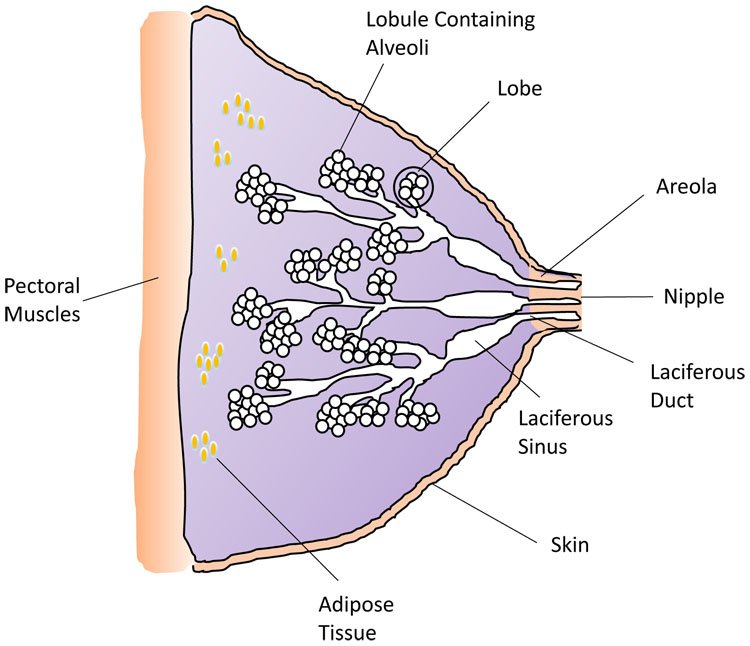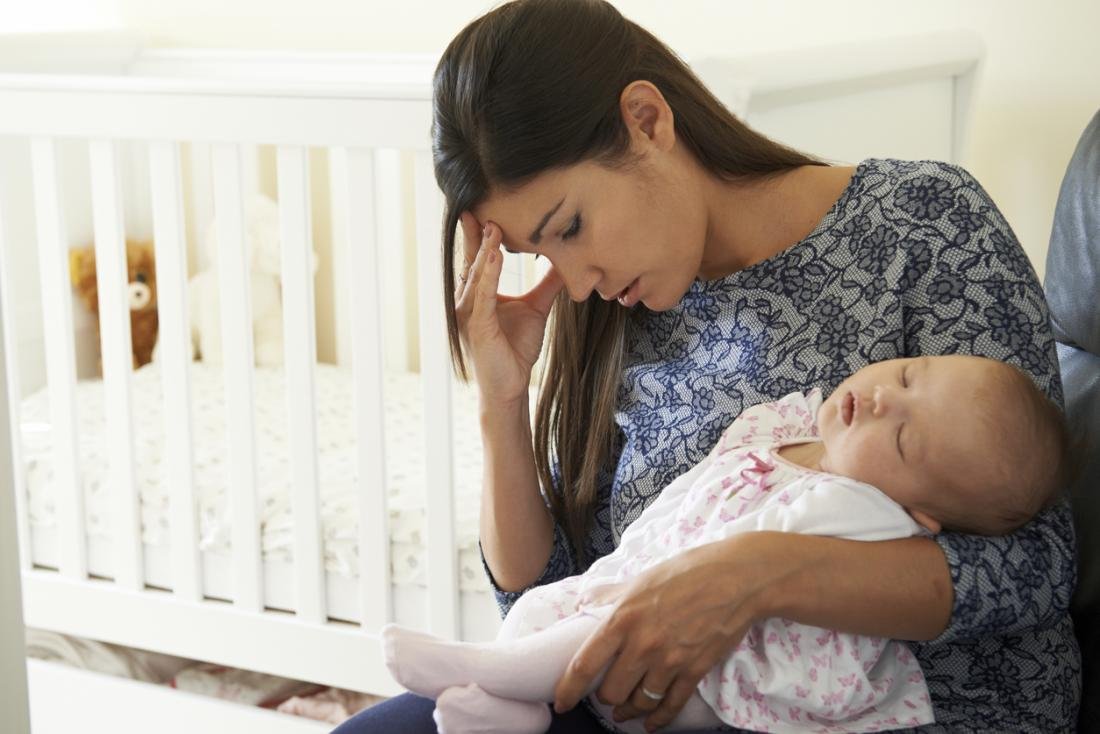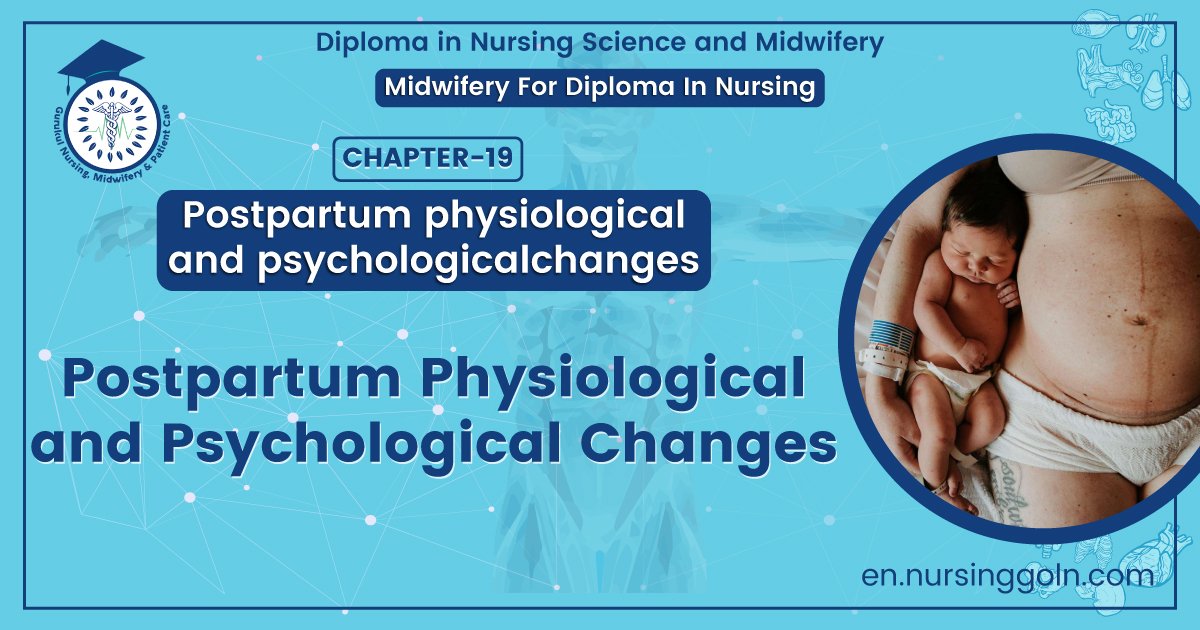Postpartum physiological and psychological changes – This course is designed to understand the care of pregnant women and newborn: antenatal, intra-natal and postnatal; breast feeding, family planning, newborn care and ethical issues, The aim of the course is to acquire knowledge and develop competencies regarding midwifery, complicated labour and newborn care including family planning.

Postpartum physiological and psychological changes
Postpartum physiological changes
1. Reproductive system:
- Involution occurs during postpartum wherein the reproductive organs return to their non pregnant state.
- The area where the placenta was implanted is sealed off to avoid bleeding
- The uterus returns to its prepregnant size.
- Involution occurs more quickly in women who are well nourished and ambulate early afterbirth.
- Contraction plays a very important role in the postpartum period for it allows the uterus to return to its former size quickly and also prevents hemorrhage.
- The cervix is soft and malleable immediately after birth, but once contraction of the cervix takes place it also returns to its prepregnant state.
- The vagina returns to its prepregnant state through contractions after the entire postpartum period but remains slightly distended than before.
- Kegel’s exercise helps return the strength and muscle tone of the vagina.
- The labia minora and majora are still atrophic and soft after birth and would never return to its prepregnantstate.
- The perineum is edematous and tender immediately after birth.
2. Musculoskeletal system:
Musculoskeletal changes include lower-back pain, leg cramps, and hip pain.
3. Cardiovascular system:
- Blood volume increases by about 50% at the time of delivery. There is an average 500-mL blood loss at vaginal delivery, and a gradual replacement of this with an “auto transfusion” of 500-750 mL as the uterus contracts.
- Significant changes in every cardiac function parameter: mean arterial pressure, cardiac output, stroke volume, and systemic vascular resistance are all affected.
- Mostofthehemodynamicrecoveryoccursinthefirst2weekspostpartum, withmore gradual shifts continuing over the next 4 or 5 months.
4. Vital signs:
- Pulse: Pulse rate is slightly lower than normal. 60-70bpm. By the end of the first week pulse rate will return to normal. Rapid and thready pulse is a sign of hemorrhage.
- Temperature oral or axillary a slightly elevated temperature less than 100.4 degrees is normal. If temperature rises above 100.4 she is considered febrile. If elevated temperature lasts be thinking infection.
- BP: Compare pressure to pre-pregnancy pressure. A drop in pressure can indicate bleeding. Elevation above 140 mm Hg systolic or 90 mm Hg diastolic may indicate post-partal pregnancy-induced hypertension.
5. Urinary system:
- Immediately after birth, dieresis sets in to rid the body the excess fluid that has accumulated during pregnancy.
- On the second to fifth day after birth, the urinary output of the woman increases to as much as 3000 mL per day.
- The woman’s abdomen must be assessed frequently during the postpartum period to prevent damage to the bladder due to over distention.
- Urine may contain more nitrogen postpartum because of the increased activity of the woman during labor.
- Lactose levels may be slightly elevated to prepare the body for breastfeeding
6. Gastrointestinal system:
- The woman will feel hungry and thirsty almost immediately after giving birth,
- Digestion and absorption are active again after birth except for women who underwent a caesarean section.
- Passage of stool may still be slow because of the relax in that is still present in the bowels.
- Bowel evacuation may still be difficult because of the pain of episiotomy.
7. Nervous system: Significant nervous system takes place during postpartum period.
8. Integumentary system:
If tearing or episiotomy occurred, sutures may be present. Be alert for any bleeding from suture site (do not confuse with lochia), any unusual drainage, odor, separation of skinat injured site, or pressure in that area.
9. Endocrine system:
- As soon as the placenta is no longer present, pregnancy hormones start to decrease.
- hPL and hCGare insignificant by 24hours.
- Progestin, estrone, and estradiol return to their prepregnancy levels a week after birth.
- FSH remains low for 12 days and then starts to increase to signal the start of a new menstrual cycle.
10. Breast changes:
- Between the third and fourth days after delivery, breasts begin to fill with milk. This can cause breast discomfort and swelling (engorgement).
- During the first days of breast feeding, nipples will probably become tender or sore. But as breastfeeding becomes more established, the soreness usually goes away.
11. Circulatory System:
- Blood volume returns to its prepregnancy level by the first or second week of birth.
- A 4-point decrease in hematocrit and a 1-g decrease in hemoglobin occur with each 250 mL bloodloss.
- Hematocrit levels reach its normal prepregnancy level 6 weeks after birth.
- An increase in leukocytes and plasma fibrinogen occurs in the first postpartum weeks as a defense mechanism against infection and hemorrhage
[Ref-Vol 4/72+Lecture]

Postpartum psychological changes
A. Taking-In Phase
- The taking-in phase usually sets 1 to 2 days after delivery
- This is the time of reflection for the woman because within the 2 to 3 day period, the woman is passive.
- The woman becomes dependent on her healthcare provider or support person with some of the daily tasks and decision-making.
- This dependence is mainly due to her physical discomfort from hemorrhoids or the after pains, from the uncertainty of how she could care for the newborn, and also from the extreme tiredness she feels that follows childbirth.
- The woman prefers to talk about her experiences during labor and birth and also
her pregnancy. - The taking-in phase provides time for the woman to regain her physical strength and organize her rambling thoughts about her new role.
- Encouraging the woman to talk about her experiences during labor and birth would greatly help her adjust and let her incorporate it into her new life.
B. Taking Hold Phase
- The taking hold phase starts 2 to 4 days after delivery.
- The woman starts to initiate actions on her own and making decisions without relying on others.
- Women who underwent anesthesia reach this phase only hours after her delivery
- She starts to focus on the newborn instead of herself and begins to actively participate in newborn care.
- Demonstrate newborn care to the mother and watch her do a return demonstration of every procedure.
- The woman still needs positive reinforcements despite the independence that she is already showing because she might still feel insecure about the care of her child.
- Allow the woman to settle in gradually into her new role while still at the hospital or healthcare facility because making decisions about the child’s welfare is a difficult part of motherhood.
C. Letting Go Phase
- During the letting go phase, the woman finally accepts her new role and gives up her old roles like being a childless woman or just a mother of one child.
- This is the phase where postpartum depression may setin.
- Readjustment of relationship is needed for an easy transition to this phase.

[Ref-Vol 4/72+Lecture]
Postpartum psychological changes and their nursing care
1. Postpartum blues-
The baby blues generally show up 3 to 4 days after birth and may last for the few weeks after delivery.
Sign
- 50% of women experience some feelings of overwhelming sadness
- Mood swings, sudden crying episodes, anxiety, loneliness.
Causes
- Sudden and quick changes in hormones
- The physical and emotional stress
- The fatigue and lack of sleep
Nursing care
- Advice women to exercise regularly
- Advice women to eat healthy
- A women need assurance that sudden crying episodes are normal
- Join a support group for new mothers
2. Postpartum depression:
It is moderate to severe depression in a women after she has given birth. It may occur soon after delivery or up to a year later.
Cause
- Women commonly have mood changes during pregnancy, especially after delivery
- These mood changes may caused by changes in hormone levels.
- Changes in work and social relationships
- Lack of sleep
- Worries about ability as another
Symptoms:
- Irritability
- Changes in appetite
- Feeling depressed the majority of the day, almost every day of the week.
- Feeling of worthlessness or guilt
blads:
- Feeling withdrawn
- Lack of interest
- Loss of energy
- negative feelings toward the baby
Nursing care:
- Ask the partner, family, and friends of the women for help with her baby
- Advise the women doesn’t hide her feelings
- Don’t make any major life changes during or right after giving birth
- Advice her to take time to go out, visit friends or spend time alone with her partners
- Advice her to take enough rest
Postpartum psychosis
In comparison to the incidence of depression and anxiety that is experienced by new mother in the postpartum period. When it is experienced by a new mother, she might be scared or confused, once out of psychotic state.
- Hallucinations
- Delusions
- Drastic mood swings
- Disorganization of speech
- Disorganization of behavior
- Extreme restlessness
- Anger

Nursing care
- Reassure the patient
- Support positive parenting behavior
- Early detection of the mal adaption
- Advice her to take enough rest. Seep when the baby is sleeping
- Spend time with family member
- Counsel the family member.
Read More.
